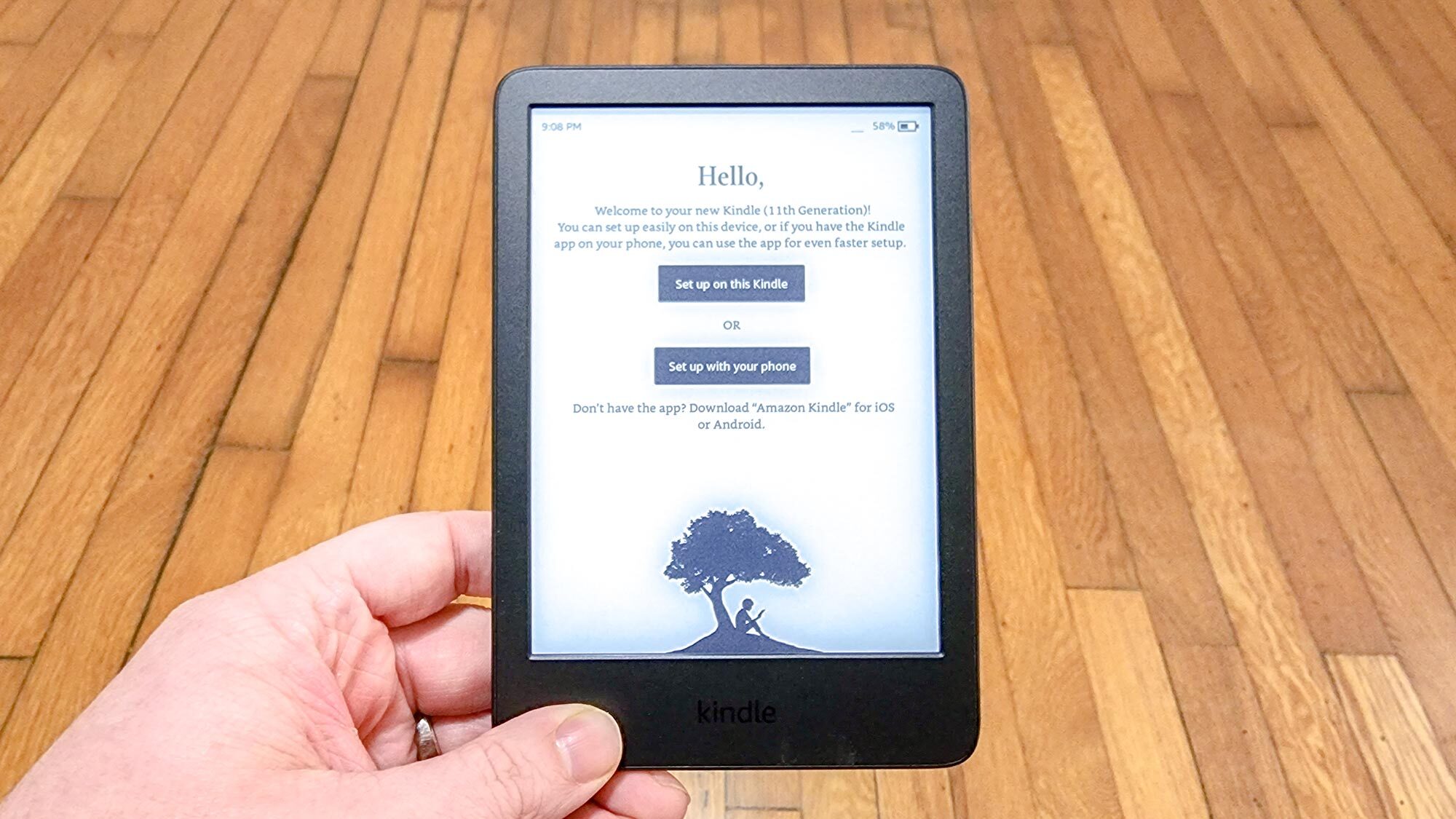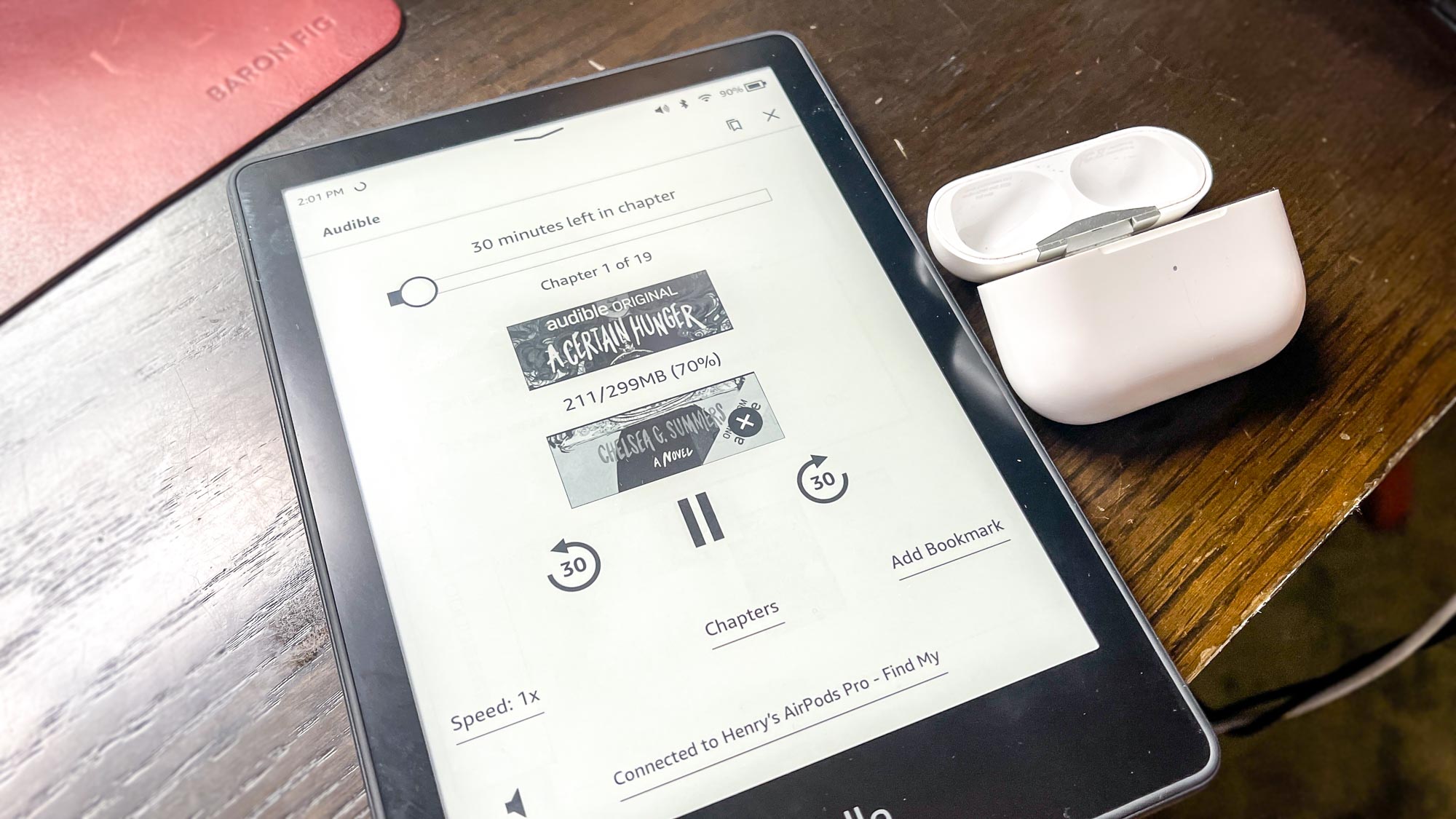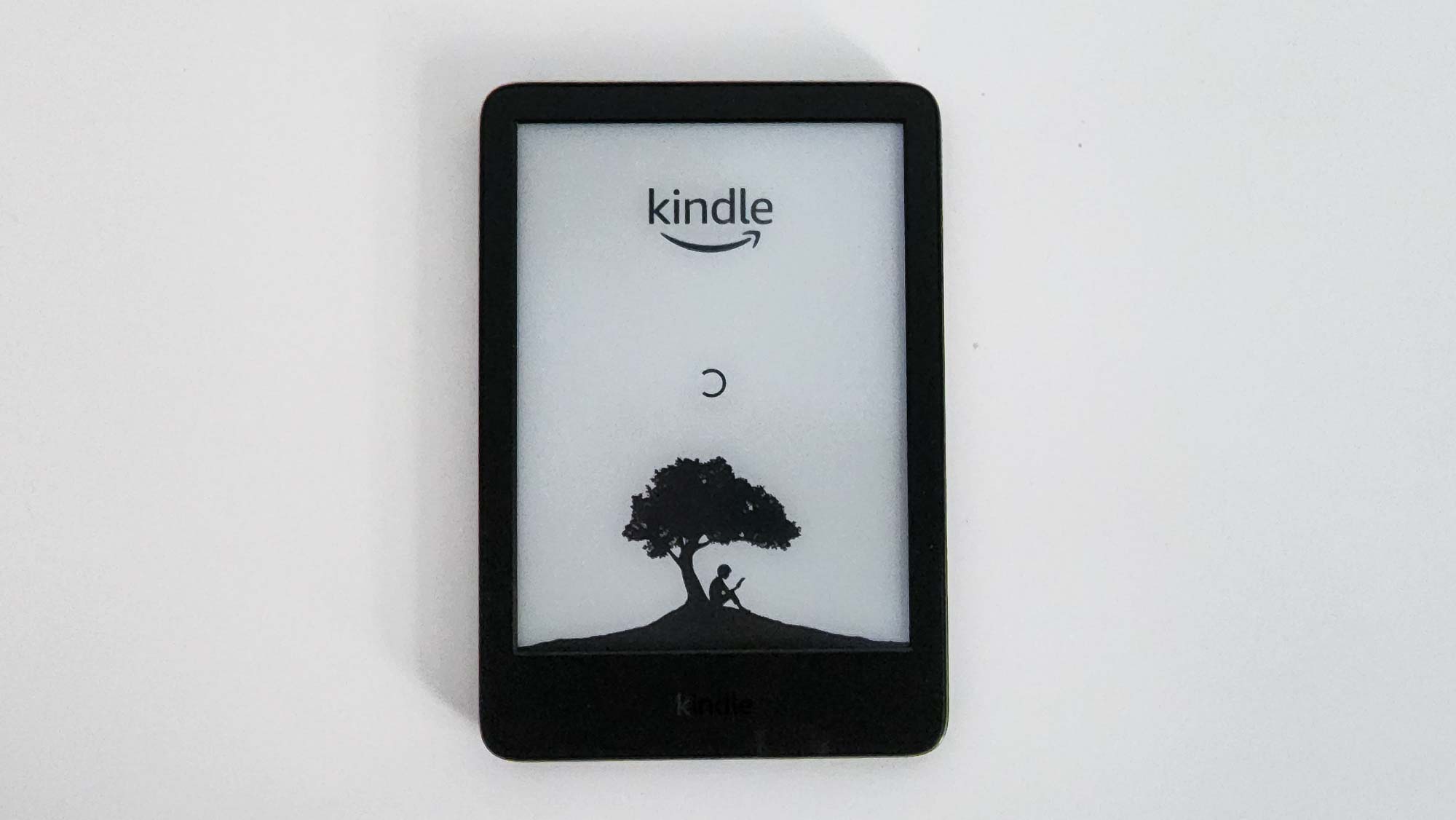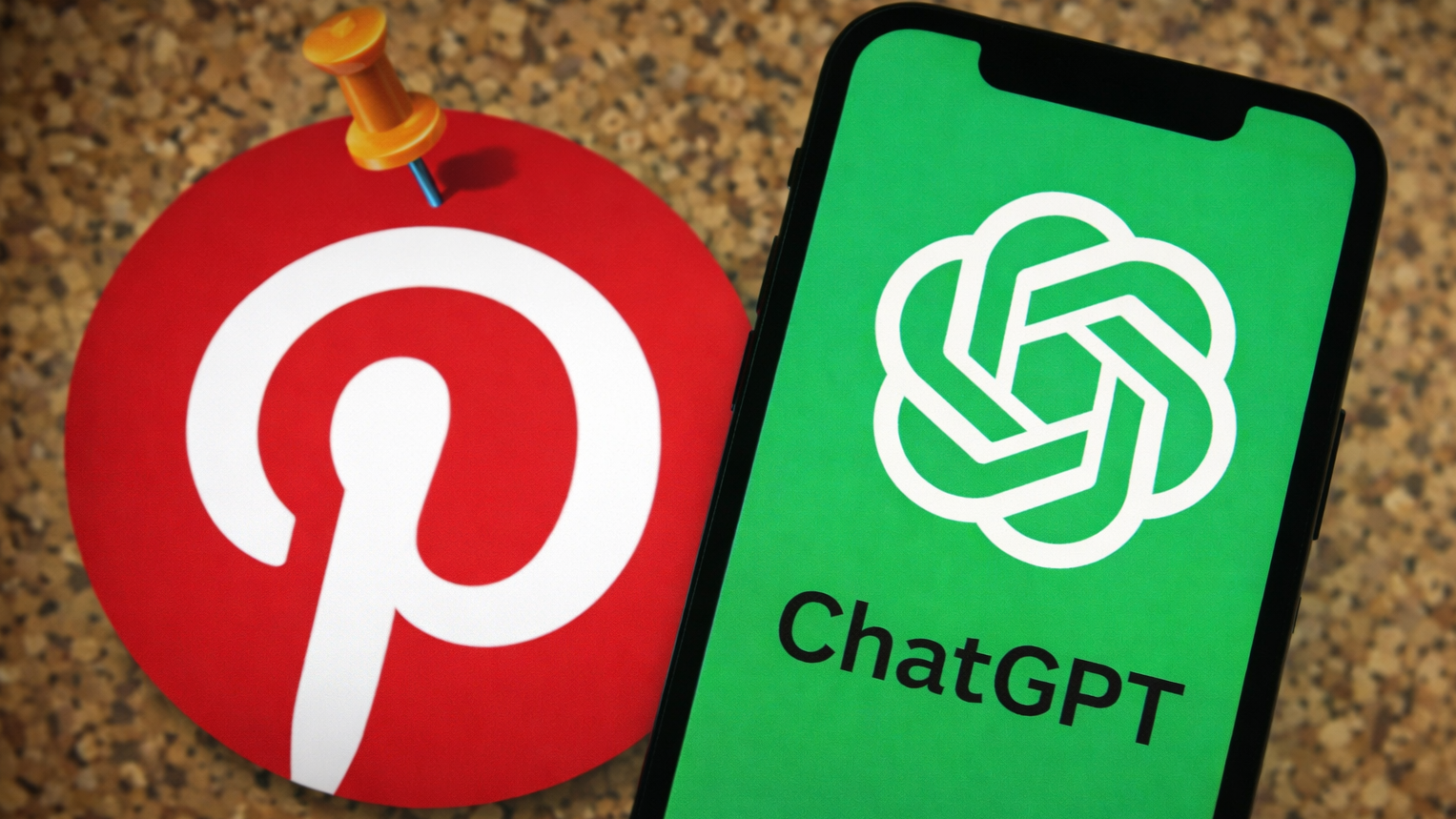Real books are good, but Kindles are better
Why I prefer the Kindle over real books

Reading on an Amazon Kindle has completely ruined reading physical books for me. Before you close this page, hear me out!
Purchasing the Amazon Kindle Paperwhite (2018) back in 2019 changed my life. Prior to that, I probably read one book every couple of years. Now, I read at least one book a month. And because I can disable the Kindle’s display light, I get much better sleep because I’m not staring at (another) bright display before bed. I’ve since switched to the Amazon Kindle (2022) and love it as much as the previous-gen Paperwhite, which makes sense since they're among the best Kindles on the market.
Due to the Kindle's general ease of use, reading physical books has now become awkward at best and uncomfortable at most. Don’t get me wrong, physical books look awesome on shelves and feel good to hold. But, for me, the advantages physical books have over a Kindle are minuscule. Below, I’ll go into detail about why I prefer reading books on a Kindle over real books.
Better reading experience
I’m going to start with what is probably the most contentious point of this op-ed: I have a better overall reading experience on a Kindle than I do with a physical book.

I don't recall the specific circumstances, but after about a year of reading exclusively on a Kindle, I picked up a physical book. It was great, initially. As I said up top, physical books feel great to hold. The smell of actual paper is also pleasing, as is the sensation of paper on one's fingers. But after reading for a few minutes, reading a real book became frustrating — which is something I wasn’t expecting!
Reading the middle of a book isn’t usually a problem since the pages on both sides remain relatively flat. The book’s weight is also evenly distributed between your hands. However, reading the first and last pages can be burdensome since one side of the book is thicker. It can be hard reading words closer to the margins when you can’t open the pages further. Trying to find the perfect angle so there are no shadows on a page is also tricky.
These issues don’t happen on a Kindle. The first and last pages are just as easy to read as anything in the middle of a book since you’re reading on a single screen. And because that screen is flat, it’s simpler to find a position where shadows aren’t created on the display. And of course, with the display brightness turned on, shadows aren’t a factor.
Get instant access to breaking news, the hottest reviews, great deals and helpful tips.

Regarding the screen’s light, I generally try to avoid turning it on. I like reading near a lamp or other light source. But if it’s bedtime and I’m eager to finish a particular chapter, I turn the Kindle’s brightness up while laying in bed. This would be harder with a physical book since I’d have to reposition myself so my lamp’s light would provide sufficient illumination. But even then, I’d have to contend with shadows on the pages.
At the end of the day, I want to get lost in whatever book I’m reading. The Kindle removes all the issues I have with reading a physical book and provides me with a richer reading experience.
Suits my digital lifestyle
Books aren’t the only physical items I’ve abandoned. Since around 2015, I’ve gone all digital with video games and comic books. I also watch movies on streaming services instead of buying them on DVD… er… 4K Blu-Ray. There’s no reason physical books should be an exception — and not only for the reasons I outlined above.

As I said in my piece about why I’m excited about the return of Big-ass laptops, I live in a studio apartment and am always seeking ways to make the most out of my limited living space. While having long shelves stuffed with books would be nice to look at, I simply don’t have room for books or physical media in general. Having a small device like a Kindle which can store thousands of books is simply easier for me.
Traveling with a Kindle is also much simpler. I tend to carry a lot of electronic devices with me, with the heaviest being whatever laptop I’m reviewing at the moment. Stuffing a book into an already jam-packed backpack would only make matters worse. And as cumbersome as reading a physical book is at home, it’s even worse on the road — especially on a packed New York City train. While it's great to see people reading big novels on the R train in the morning, I can’t bring myself to do that.

I also like the option of reading books on the Kindle app. If I can’t use a Kindle while traveling, I can instead read on my iPhone 13 Pro. Being able to sync to the last page read on all devices is also handy when I have to switch between reading on a Kindle and iPhone.
Since Amazon makes the Kindle, it’s easy to purchase books or add them to my wishlist right from the device. I know I can perform the same function on competitors like the Kobo e-reader, but I’m married to Amazon at this point and prefer making my purchases from that website instead of jumping around to different places.
Goodreads integration
I learned about Goodreads about a year after I got the Kindle Paperwhite. For those who don’t know, this is an Amazon-owned website that lets you keep track of the books you’re reading and allows you to write book reviews. You can also share your progress on what you’re reading and also socialize with friends and see what books they’re reading. My favorite part is setting reading goals for a year and seeing if I can accomplish them. Goodreads is a blast.
Whether you read books digitally or physically, anyone can sign up for Goodreads and use its features. But things are easier with a Kindle linked to an Amazon account. Instead of logging into Goodreads on my computer, I can simply update my status or leave a quick review right from the Kindle. It’s super convenient.
With that said, updating my book progress and posting a review on Goodreads is all I can effectively do on a Kindle. While I love the device, navigating through it is a slog due to how slow the e-reader loads in comparison to the best phones and the best tablets these days. If I want to write a full review or leave messages for my friends, I use Goodreads on my computer or phone. But aside from that, I like how well Goodreads pairs with a Kindle.
Kindles are my prefered way to read
I want to be clear that I don’t think reading physical books is bad. After all, printed books have been around for hundreds of years; it would be wrong of me to look down on something with such longevity. Real books are and always will be fantastic.
But while millions of folks will continue enjoying actual books, I’m going to stick with Kindles. As I outlined above, Amazon’s e-readers not only suit my lifestyle perfectly, but they allow me to read many more books than I would otherwise. And in the end, reading more books is what really matters — whether you do so with an e-reader or a real book.

Tony is a computing writer at Tom’s Guide covering laptops, tablets, Windows, and iOS. During his off-hours, Tony enjoys reading comic books, playing video games, reading speculative fiction novels, and spending too much time on X/Twitter. His non-nerdy pursuits involve attending Hard Rock/Heavy Metal concerts and going to NYC bars with friends and colleagues. His work has appeared in publications such as Laptop Mag, PC Mag, and various independent gaming sites.
